Description of the pumpkin variety Hazelnut, cultivation and care
The pumpkin is undoubtedly called the queen of the garden. This vegetable is loved and grown on almost all continents. In England, annual competitions are held among gardeners for the largest fruit they adore, in Italy they adore pumpkin and eat all parts of the plant, and flowers, and leaves, and even roots. America loves the famous pumpkin pie. In Russia, you can find pumpkin in any vegetable garden, from Krasnodar to Siberia. And pumpkin seeds are a healthy, nutritious product. An interesting and unusual variety is the Hazelnut pumpkin.
And this is not surprising, because the representatives of these melons and gourds are unpretentious in care, give a high yield, have excellent taste, and the variety of varieties is amazing. Plant and grow pumpkin it is possible in an abandoned and lean corner of the garden, but even on a compost heap, the main thing is that it is sunny.
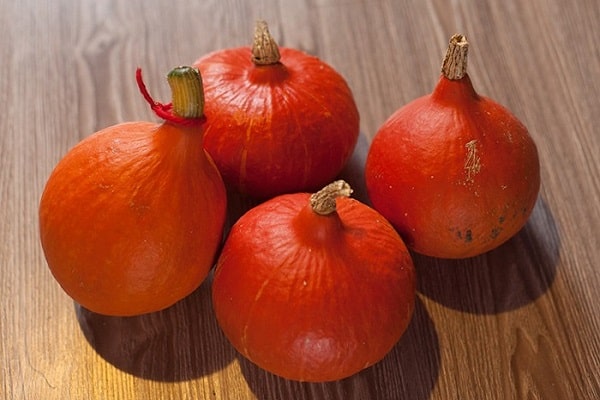
This variety belongs to the hybrid early maturing varieties of pumpkin crops. Gives a massive green bush, the plant grows profusely, and the lashes reach 4-5 meters. The pumpkin grows medium, weighing 1–1.5 kilograms, has a bright orange color, round, nut-like shape. The crust is thick and hard, which makes it possible for pumpkin fruits to be stored even in a city apartment, without requiring special conditions and temperatures. And, of course, the main advantage of this variety is the delicate taste of hazelnuts, for which it got its name.
Features of the variety and cultivation
The variety belongs to the early varieties, the growing season lasts 90–95 days. Since the variety is hybrid, the seeds can be bought in specialized stores or ordered online. You can grow in two ways:
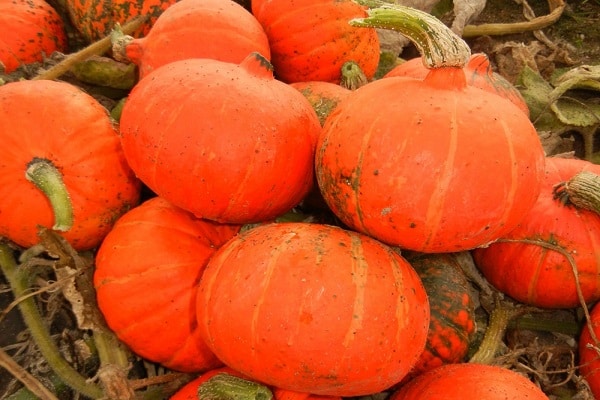
- By planting seeds directly into open ground.
- Seedling method.
In open ground, seeds are densely planted on May 15–20. The distance between the holes is approximately 1–1.4 meters, burying at different depths of 8–10 cm to protect against spring night frosts. The crops are covered with foil to avoid temperature extremes. The film is shot in late June, early July.
For growing in seedlings, pumpkin seeds are sown in boxes or cups at the end of April. After about 25–30 days, the plants can be planted outdoors.
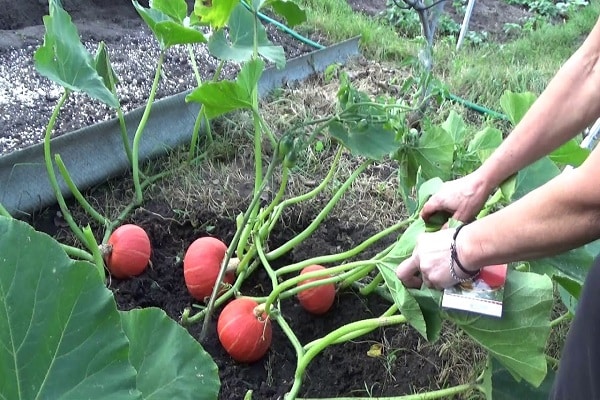
Loves fertile, loose soil, and like all melons, very light-requiring. The plant is hygrophilous, especially during the bud ovary period. Pumpkin is a tropical plant, so the leaves grow faster than fruits. If the summer is not very hot, then the shoots are cut off, leaving no more than two or three. Of the melons, it is the most demanding on soil fertility, since it is a high-yielding crop.
Diseases and pests
Many hybrid varieties are more resistant to diseases, but powdery mildew, black mold, ascochitosis, and anthracnose are the most common ones. At the first signs of disease, the plant and the garden bed are treated with a 1% solution of Bordeaux liquid or another fungicide. Sometimes just a soapy solution is enough.
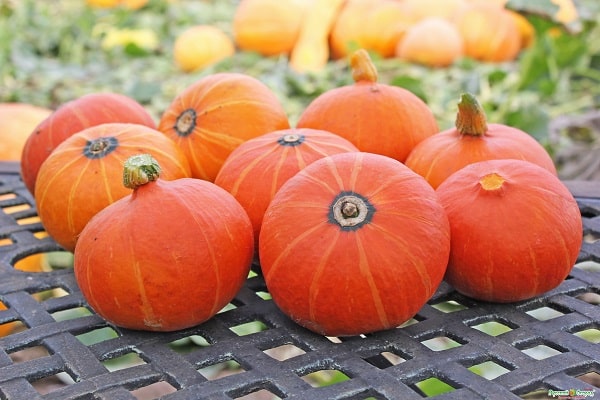
Aphids can often be found on plants. I remove it by treating the culture with infusions of chamomile, wormwood, tomatoes, potatoes. Use tobacco infusion, ash solution or slaked lime.
Harvesting and storage
Pumpkins are quietly in the garden until the first frost. Therefore, the harvest takes place from about the end of August to the beginning or middle of September. A pumpkin is considered ripe if:
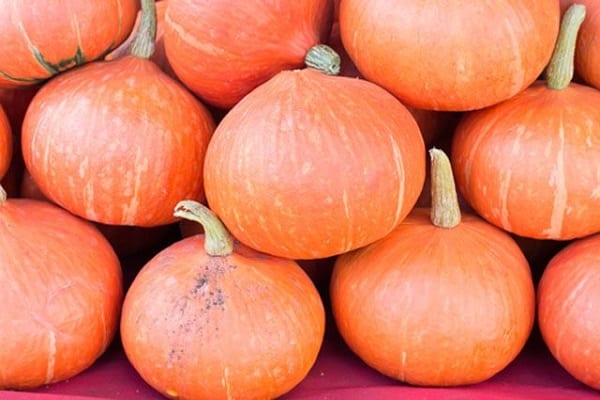
- Large, rigid peduncle.
- Bright, saturated color.
- The fruit is firm, with a tough crust.
- Leaves turn yellowish, wither.
Hazelnut pumpkin fruits are very well stored in the apartment, and even in the kitchen. Due to its hard crust and rich, bright color, it copes well with decorative functions. Ideal size, light weight - maximum 1.5 kilograms, round shape does not require much space from you and will delight you for 7–8 months.
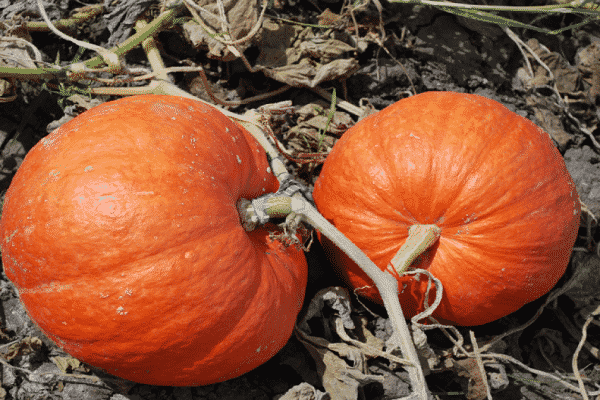
Reviews of summer residents
Gardeners' reviews of this variety are sometimes very different. Enthusiastic declarations of love, to restrained ones, with complaints of insufficient sweetness, weak taste and aroma. Still, this variety is hybrid, and a lot depends on the quality of the seed.
But loyal fans of this interesting and unusual variety appeared. The obvious advantages of the pumpkin are compactness and small size, it is convenient to use in cooking, just enough for porridge or baking. A strong and firm crust helps to preserve the crop without problems in the apartment. Some people note the pleasant notes of nutmeg in the taste. It works especially well in baking.
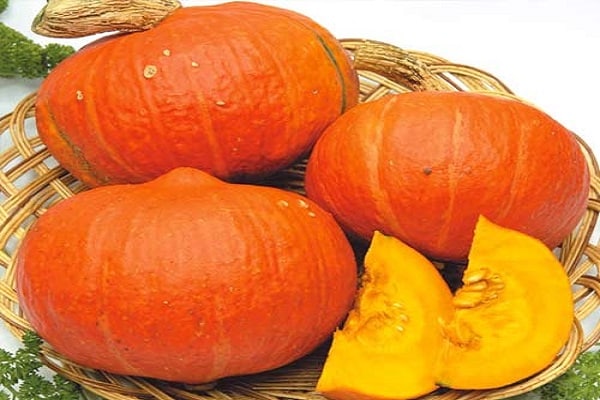
Due to its high starchiness, the pumpkin does not disintegrate during heat treatment, it keeps its shape well, in structure it is more like a potato. If you cut off the lid from above, take out the pulp, you get an original edible form for cooking roasts, meat, vegetables. You can simply cut into slices, sprinkle with salt, spices, drizzle with a little oil and bake. Believe me, not even pumpkin lovers eat with pleasure.
Try it, experiment, and have fun with the process.

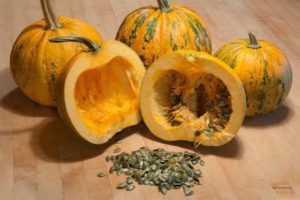



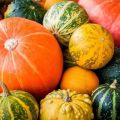
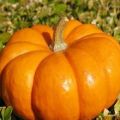

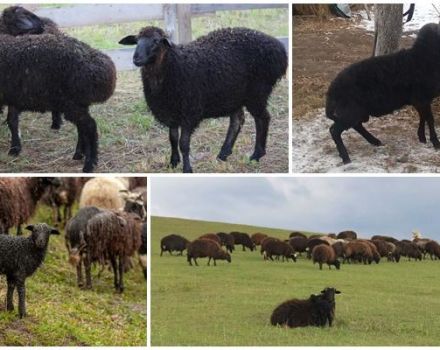

I fell in love with this variety for its bright color and pronounced taste. The size of the garden allows us to grow a large amount of pumpkin, so we use it for food, storage and juice-puree (for the winter, for spinning). We plant a lot, counting on relatives and friends, they also fell in love with this pumpkin. Therefore, to increase productivity and ripeness, I began to use a bioactivator of growth BioGrow... With him, the harvest is never delayed and it is enough for everyone.